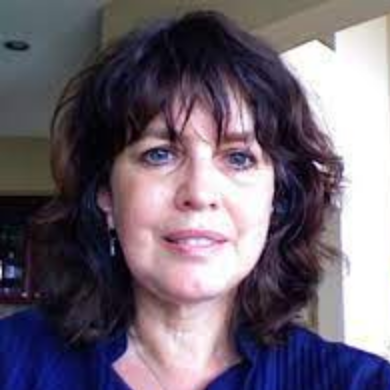
The 5 Best CMMS for Facilities & Building Maintenance
In our ever-evolving business operations landscape, there is an increasing need for streamlined processes and efficient facility management. Gone are manual facilities and maintenance management using paper and spreadsheets. Upkeep’s 2024 State of Maintenance Report found that 65% of maintenance leaders use a CMMS to track maintenance activities. However, a similar study in 2019 showed that only 39% of maintenance leaders had implemented a CMMS. In the past, CMMS software was primarily used in industrial settings and large manufacturing facilities. But today, it's being used in almost every industry, including sports facilities, K-12 schools, religious institutions, parks, data centers, office buildings, and more.
In this article, we will explore the world of CMMS and how it transforms facilities and building management for businesses of all sizes and across industry sectors. We will also closely examine five CMMS software products that are gaining traction with facility managers.
What is CMMS Software?
In simple terms, CMMS is software designed to simplify and enhance organizational maintenance operations. Its capabilities extend beyond spreadsheets and access databases, offering organizations a centralized platform for managing, scheduling, and tracking maintenance tasks. Its primary goal is to streamline work order processing, maximize asset lifespan, reduce downtime, and ensure the optimal functioning of facilities.
The CMMS first appeared in the maintenance management stage during the mid-1960s when it was introduced as a basic work order system. Early versions primarily focused on scheduling and tracking maintenance tasks. Since then, CMMSs have continued to evolve by keeping up with new technologies and responding to changing maintenance operations needs. Contemporary CMMSs can now integrate advanced features such as predictive maintenance, IoT connectivity, and data analytics by broadening their scope and adaptability to meet various maintenance needs.
Another innovation came with a shift toward cloud-based solutions, which enhanced accessibility and collaboration, allowing real-time updates and remote asset management. Today’s CMMS mobile capabilities have extended their reach, enabling maintenance teams to access information and perform tasks on the go.
More recently, CMMS developers took a seismic leap by integrating artificial intelligence and machine learning to allow CMMSs to analyze historical data, predict equipment failures, and optimize maintenance schedules. As a result, the evolution of CMMSs reflects a transition from essential maintenance planning tools to comprehensive asset management systems that leverage cutting-edge technologies for improved efficiency and reliability.

Key Features of CMMS
Before we take a look at the benefits CMMSs offer building and facilities management operations, we’ll begin by reviewing their key features, such as:
Asset Management
CMMS software offers a comprehensive database for cataloging and tracking all assets within a facility. This includes everything from HVAC systems and machinery to lighting fixtures and plumbing. With a centralized repository of asset information, maintenance teams can easily monitor equipment health in real time, schedule preventive maintenance, and track historical performance.
Work Order Management
As previously noted, the days of manual work order systems are gone. For most organizations, spreadsheets for managing companies’ operations are being put out to pasture. As an automated system, CMMS oversees the work order process, allowing facility managers to create, assign, and track maintenance tasks effortlessly. This improves efficiency and ensures that maintenance activities are prioritized based on urgency and impact on operations.
Preventive Maintenance
Proactive maintenance is a critical component of CMMS. By scheduling routine inspections and preventive maintenance tasks, organizations can avoid unexpected breakdowns, extend the lifespan of equipment, and ultimately reduce overall maintenance costs. CMMS sends automated reminders for upcoming tasks, keeping the maintenance team ahead of potential issues.
Inventory Management
CMMS assists in managing spare parts and inventory levels. CMMSs keep track of stock quantities, reordering thresholds, and usage patterns. This helps prevent stockouts, minimize excess inventory, and ensure that the correct parts are always available when needed.
With a CMMS, there is no longer the need to search for a part or scramble to order one when it is urgently needed.
CMMS for Building and Facilities Management
The same is true for maintaining company operations and buildings and facilities, with many of the same CMMS features applied to both. Effective maintenance management is critical to ensure optimal functionality, safety, and longevity.
What elements are needed for routine building and facilities maintenance management?
Instead of maintaining a company’s production equipment, the focus on maintenance management for buildings and facilities is quite different. The following is a list of some of the elements requiring routine CMMS maintenance management:
- Mechanical Systems such as HVAC (heating, ventilation, and air conditioning)
- Electrical Systems, including wiring and panels
- Plumbing Systems
- Elevators and Escalators
- Fire Protection Systems
- General Facilities Elements such as lighting, doors, windows, and security systems
CMMS Features Used in Building and Facilities Management
The following are CMMS features used in building and facilities management:
Preventive Maintenance
Preventive maintenance is essential to identify and address potential issues before they escalate, reducing the likelihood of unexpected breakdowns and minimizing downtime.
Predictive Maintenance
Predictive maintenance utilizes advanced technologies like sensors and data analytics to anticipate equipment failures and schedule maintenance activities accordingly. Routine inspections and audits are vital in identifying wear and tear, enabling timely repairs and replacements.
Asset Management
Equipment management, including inventory tracking and lifecycle planning, ensures efficient resource allocation.
Emergency Response Planning
Emergency response planning is crucial for addressing unforeseen events promptly, such as equipment failures or natural disasters.
Regulatory Compliance
With safety and regulatory standards, creating a secure and compliant environment for occupants and adhering to legal requirements is imperative. CMMS ensures that all assets subject to regulatory compliance are ready and able to meet the required standards.
A comprehensive maintenance management strategy that integrates the above aspects will enhance the overall performance, reliability, and safety of buildings and facilities.
Benefits of CMMS in Building and Facilities Management
Improved Operational Efficiency
By automating maintenance processes, CMMS significantly reduces the time and effort spent on administrative tasks. Maintenance teams can focus on more critical activities, improving overall operational efficiency.
Cost Savings
The proactive nature of preventive maintenance prevents costly breakdowns and extends the lifespan of assets. Additionally, optimized inventory management helps reduce unnecessary spending on spare parts and supplies.
Enhanced Data-driven Decision Making
CMMS generates insightful reports and analytics based on maintenance data. These reports empower facility managers to make informed decisions, allocate resources effectively, and identify areas for continuous improvement.
Regulatory Compliance
CMMS helps ensure that facilities adhere to compliance standards in industries with stringent regulations. It provides a transparent record of maintenance activities, inspections, and equipment history, facilitating audits and regulatory inspections.
Five CMMS Software to Consider for Facilities & Building Maintenance
1. Facilio
Facilio was founded in 2017, is based in New York, NY, and has offices in Australia, India, Singapore, the UAE, and the UK. The company specializes in integrated facilities management software by harnessing the Internet of Things (IoT) and machine learning to manage building operations, maintenance, and sustainability performance across a portfolio of buildings in real time. Facilio offers solutions for commercial real estate, retail, healthcare, higher education, and more. It is a robust facilities management solution that goes beyond work order and asset management by offering energy, utilities, and refrigeration monitoring solutions.
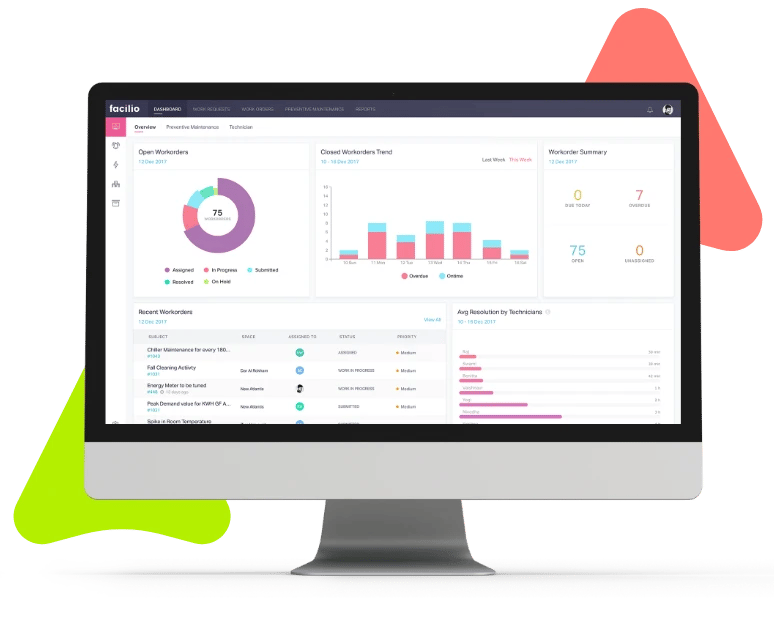
Facillio’s website does not explicitly outline its pricing but notes that it is all-inclusive. The company offers customized pricing based on the number of users/buildings, portfolio size, training sessions, and integration requirements. Contact the company for precise pricing.
2. FlowPath
Flowpath was founded in 2019 and is located in Atlanta, Georgia. The company offers a facility management platform built for a small team but can be seamlessly scaled for large organizations. FlowPath’s CMMS automates work orders, maintenance, events, notifications, projects, and reporting in a simple-to-use platform so professionals can effortlessly take charge of their facilities' work. One of the best facility management features of FlowPath is its incorporation of the building floor plans. Users can view and manage work orders and assets from the interactive drawings.
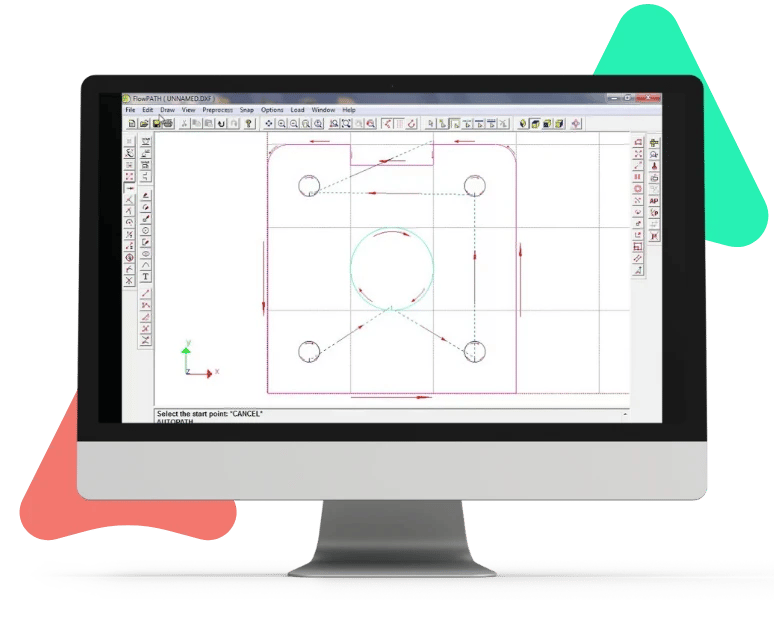
Flowpath offers three pricing plans based on the features required and the number of facilities. Its entry-level Core Plan is $399/month and focuses primarily on work orders and assets. The Pro CMMS Plan is $999/month and includes inspections, project management, invoicing, scheduling, and mobile access. Finally, Flowpath’s Workspace CMMS Plan is priced at $2499/month plus an additional $50/month/location. This plan offers more customization for multi-location facilities and security between sites and departments.
3. Click Maint
Click Maint CMMS is a great solution for small to mid-sized businesses looking for an easy-to-use solution for managing work orders, preventive maintenance, and assets within facilities. This CMMS has all the essential features of maintenance software: service requests, work orders, preventive maintenance, asset, location, parts, and vendor management, all at a great price. Click Maint is a suitable solution for various industries, including hotels and resorts, schools, sports complexes, municipalities, religious institutions, manufacturing plants, and more.
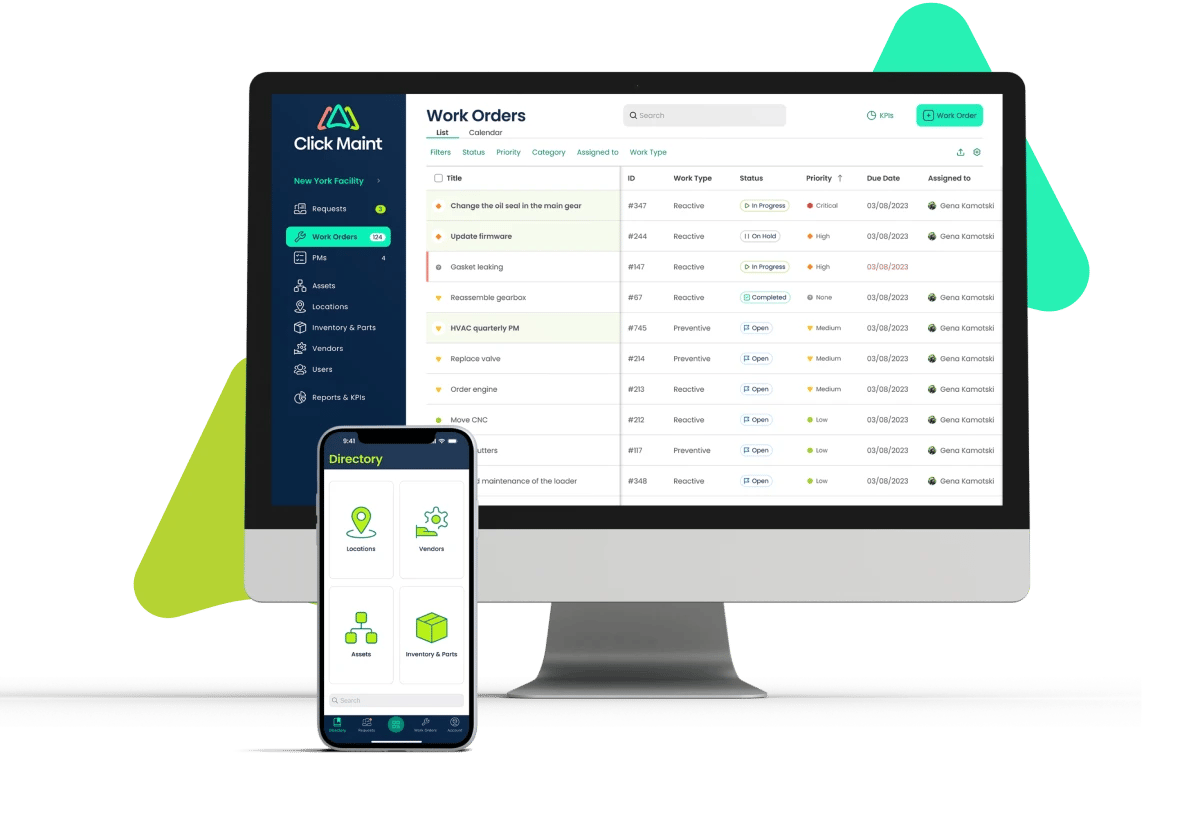
One of the best things about Click Maint is its monthly price of $35 USD per user. This makes Click Maint a viable solution for small businesses just starting up and larger teams looking for a simple solution for tracking work orders, requests, and preventive maintenance.
4. Brightly
Brightly has been around for 20+ years and is headquartered in Cary, North Carolina, with other locations in Toronto, the UK, India, and Australia. Brightly previously went under the name Dude Solutions and was recently rebranded when it was acquired by Siemens in 2021. Brightly focuses on asset management solutions by incorporating CMMS, EAM, Strategic Asset Management, and IoT Remote Monitoring. It has over 12,000 customers globally.
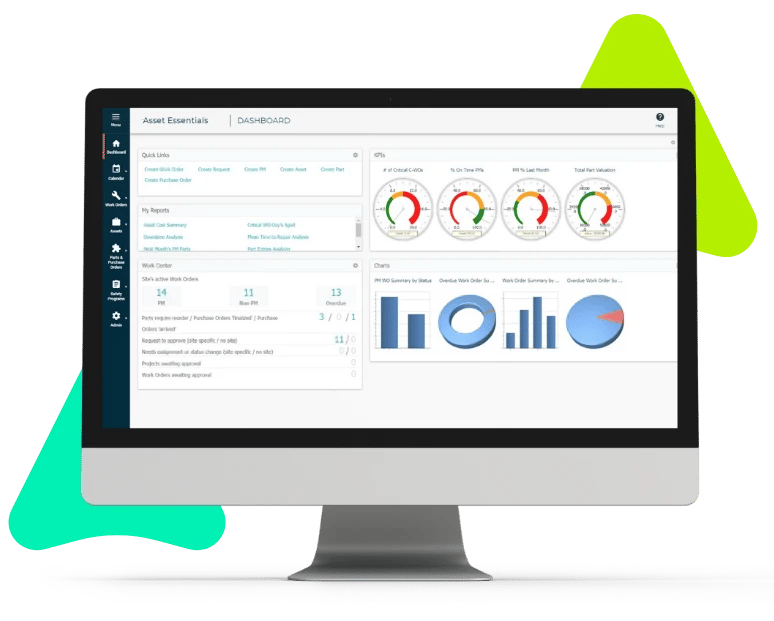
Brightly has a long history in facilities management, and its product goes very deep with its capabilities. Customers can plug and play with the modules and scale as needed. Aside from the standard CMMS features like work order management, preventive maintenance, and asset tracking, Brightly offers solutions for event scheduling, capital budget planning, energy and utilities management, and more.
Brightly’s website does not provide any pricing information. Contact the company directly for more details.
5. FMX
FMX CMMS was founded in 2012 and is located in Columbus, Ohio. It currently has over 1,000 customers. In addition to providing operations and maintenance management, the company focuses on facilities management and caters primarily to schools, higher education, and government facilities. FMX has long been regarded as an easy-to-use CMMS specifically designed for facility maintenance. It has all the standard CMMS features but also includes interactive floor plans, room booking, projects, and capital improvements tracking, which are not commonly found.
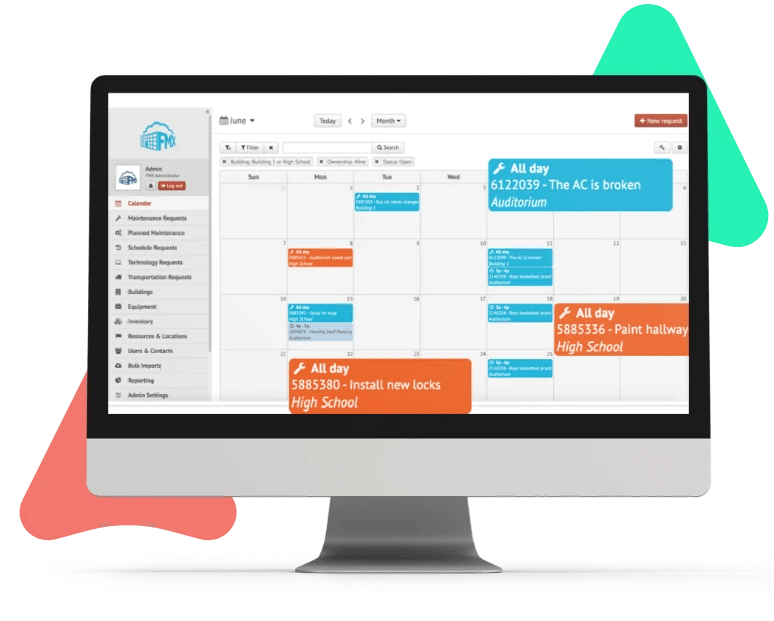
Pricing is not published on the FMX website. Contact the vendor to get more information.
The importance of customization in CMMS
While many CMMS solutions offer a wide array of features, the ability to customize these tools to meet specific organizational needs is important for maximizing their effectiveness. Organizations should seek CMMS platforms allowing customizable dashboards, reporting tools, and workflows. This customization ensures that facility managers can tailor the software to their operational requirements, enabling them to focus on the metrics and KPIs that matter most to their facilities. Furthermore, by incorporating user feedback into the customization process, organizations can ensure that their CMMS evolves alongside their needs, providing long-term value.
Conclusion
Effective building and facilities management must be considered in the fast-paced business world. CMMS emerges as a game-changer, revolutionizing how organizations approach operations, building, facilities maintenance, and asset management. By embracing this technology, businesses can unlock new levels of efficiency, reduce costs, and ensure the seamless operation of their facilities. As we move toward a future where smart technologies play a central role in business operations, CMMS stands out as a key tool for those aiming to stay ahead of the curve in facility management.
TABLE OF CONTENTS
- What is CMMS Software?
- Key Features of CMMS
- Asset Management
- Work Order Management
- Preventive Maintenance
- Inventory Management
- CMMS for Building and Facilities Management
- What elements are needed for routine building and facilities maintenance management?
- CMMS Features Used in Building and Facilities Management
- Benefits of CMMS in Building and Facilities Management
- Five CMMS Software to Consider for Facilities & Building Maintenance
- 1. Facilio
- 2. FlowPath
- 3. Click Maint
- 4. Brightly
- 5. FMX
- The importance of customization in CMMS
- Conclusion
Keep Reading
Introduction Maintenance management is the foundation of maintenance operations in industries ...
11 Feb 2025
Introduction A Computerized Maintenance Management System (CMMS) is software designed to help ...
7 Feb 2025
Ever find yourself checking into a luxury hotel and expecting a relaxing stay, only to find a ...
11 Apr 2025
Organizations are witnessing swift changes in the business environment and confronting a ...
8 Apr 2025
Last month, news outlets and the entire internet was abuzz with the return of NASA astronauts ...
3 Apr 2025
What comes first - CMMS or predictive maintenance? If your answer is either, it is correct. ...
28 Mar 2025
Artificial intelligence (AI) talk has become commonplace. Today, engaging in business-focused ...
27 Mar 2025
Imagine a world where machines predict, diagnose, and fix their issues before they fail. This ...
25 Mar 2025
A facility maintenance plan is at the core of a facility’s operations. This organized ...
21 Mar 2025
Think of managing your maintenance operations like managing a championship sports team. Just ...
21 Mar 2025
The maintenance sector is battling a severe talent shortage that threatens to undermine ...
7 Mar 2025
Manufacturing maintenance is the backbone of industrial efficiency, ensuring machines run ...
5 Mar 2025
No one likes playing a guessing game when equipment breaks down. Yet, maintenance teams often ...
4 Mar 2025
The size of the preventive maintenance software market is discussed in millions of dollars, ...
4 Mar 2025
The organizational structure and corporate hierarchy vary from company to company. Large ...
28 Feb 2025
Maintenance procedures are essential for ensuring the longevity and reliability of machinery ...
21 Feb 2025
Sustainability is no longer just a buzzword; it's a critical component of corporate social ...
20 Feb 2025
A Computerized Maintenance Management System (CMMS) relies on accurate, well-organized data ...
18 Feb 2025
In an era where technology drives operational efficiency, Computerized Maintenance Management ...
14 Feb 2025
A Computerized Maintenance Management System (CMMS) is a key component of modern maintenance ...
13 Feb 2025
Introduction Maintenance management is the foundation of maintenance operations in industries ...
11 Feb 2025
Introduction A Computerized Maintenance Management System (CMMS) is software designed to help ...
7 Feb 2025
Ever find yourself checking into a luxury hotel and expecting a relaxing stay, only to find a ...
11 Apr 2025
Organizations are witnessing swift changes in the business environment and confronting a ...
8 Apr 2025
Last month, news outlets and the entire internet was abuzz with the return of NASA astronauts ...
3 Apr 2025
What comes first - CMMS or predictive maintenance? If your answer is either, it is correct. ...
28 Mar 2025
Artificial intelligence (AI) talk has become commonplace. Today, engaging in business-focused ...
27 Mar 2025
Imagine a world where machines predict, diagnose, and fix their issues before they fail. This ...
25 Mar 2025
A facility maintenance plan is at the core of a facility’s operations. This organized ...
21 Mar 2025
Think of managing your maintenance operations like managing a championship sports team. Just ...
21 Mar 2025
The maintenance sector is battling a severe talent shortage that threatens to undermine ...
7 Mar 2025
Manufacturing maintenance is the backbone of industrial efficiency, ensuring machines run ...
5 Mar 2025
No one likes playing a guessing game when equipment breaks down. Yet, maintenance teams often ...
4 Mar 2025
The size of the preventive maintenance software market is discussed in millions of dollars, ...
4 Mar 2025
The organizational structure and corporate hierarchy vary from company to company. Large ...
28 Feb 2025
Maintenance procedures are essential for ensuring the longevity and reliability of machinery ...
21 Feb 2025
Sustainability is no longer just a buzzword; it's a critical component of corporate social ...
20 Feb 2025
A Computerized Maintenance Management System (CMMS) relies on accurate, well-organized data ...
18 Feb 2025
In an era where technology drives operational efficiency, Computerized Maintenance Management ...
14 Feb 2025
A Computerized Maintenance Management System (CMMS) is a key component of modern maintenance ...
13 Feb 2025
Introduction Maintenance management is the foundation of maintenance operations in industries ...
11 Feb 2025
Introduction A Computerized Maintenance Management System (CMMS) is software designed to help ...
7 Feb 2025


